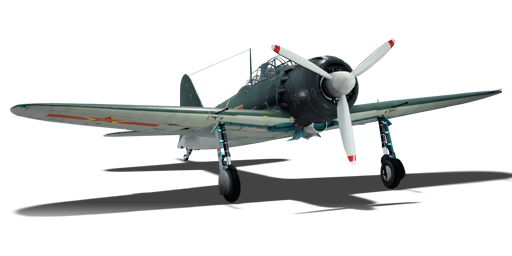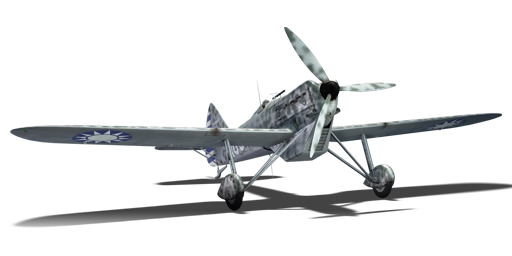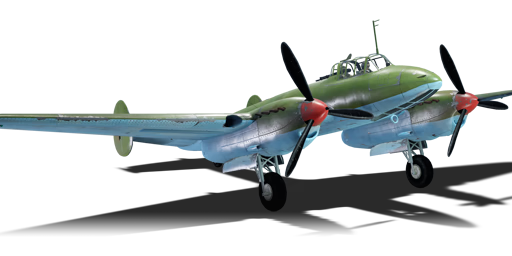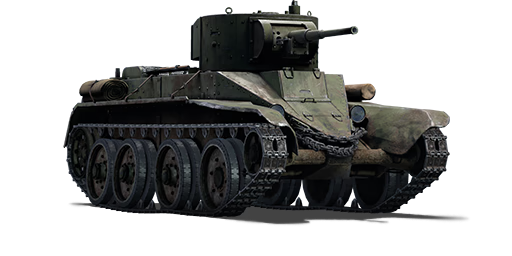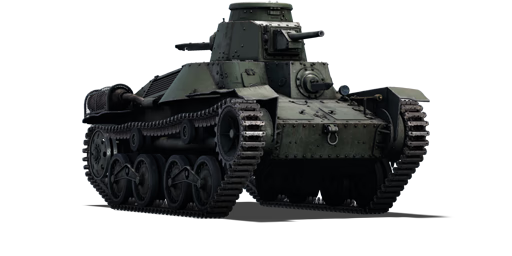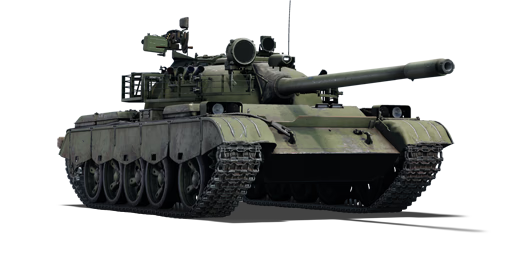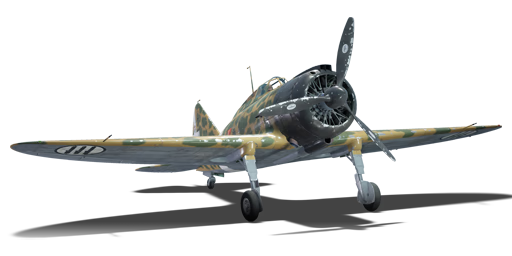Difference between revisions of "User:U16170503"
m (Fixed Link) |
m |
||
| Line 198: | Line 198: | ||
*'''A6M5 Reisen''' | *'''A6M5 Reisen''' | ||
<div class="mw-collapsible mw-collapsed"><div class="mw-collapsible-content"> | <div class="mw-collapsible mw-collapsed"><div class="mw-collapsible-content"> | ||
| − | {{ | + | {{Specs-Card |
|code=a6m5_zero_china | |code=a6m5_zero_china | ||
|images={{Specs-Card-Image|}} | |images={{Specs-Card-Image|}} | ||
| Line 240: | Line 240: | ||
*'''D.510C''' | *'''D.510C''' | ||
<div class="mw-collapsible mw-collapsed"><div class="mw-collapsible-content"> | <div class="mw-collapsible mw-collapsed"><div class="mw-collapsible-content"> | ||
| − | {{ | + | {{Specs-Card |
|code=d_510c | |code=d_510c | ||
|images={{Specs-Card-Image|}} | |images={{Specs-Card-Image|}} | ||
| Line 249: | Line 249: | ||
*'''Pe-2-359 Peshka''' | *'''Pe-2-359 Peshka''' | ||
<div class="mw-collapsible mw-collapsed"><div class="mw-collapsible-content"> | <div class="mw-collapsible mw-collapsed"><div class="mw-collapsible-content"> | ||
| − | {{ | + | {{Specs-Card |
|code=pe-2-359_china | |code=pe-2-359_china | ||
|images={{Specs-Card-Image|}} | |images={{Specs-Card-Image|}} | ||
| Line 304: | Line 304: | ||
*'''BT-5''' | *'''BT-5''' | ||
<div class="mw-collapsible mw-collapsed"><div class="mw-collapsible-content"> | <div class="mw-collapsible mw-collapsed"><div class="mw-collapsible-content"> | ||
| − | {{ | + | {{Specs-Card |
|code=cn_bt_5 | |code=cn_bt_5 | ||
|images={{Specs-Card-Image|}} | |images={{Specs-Card-Image|}} | ||
| Line 311: | Line 311: | ||
*'''Ha-Go''' | *'''Ha-Go''' | ||
<div class="mw-collapsible mw-collapsed"><div class="mw-collapsible-content"> | <div class="mw-collapsible mw-collapsed"><div class="mw-collapsible-content"> | ||
| − | {{ | + | {{Specs-Card |
|code=cn_type_95_ha_go | |code=cn_type_95_ha_go | ||
|images={{Specs-Card-Image|}} | |images={{Specs-Card-Image|}} | ||
| Line 318: | Line 318: | ||
*'''Type 69-IIA''' | *'''Type 69-IIA''' | ||
<div class="mw-collapsible mw-collapsed"><div class="mw-collapsible-content"> | <div class="mw-collapsible mw-collapsed"><div class="mw-collapsible-content"> | ||
| − | {{ | + | {{Specs-Card |
|code=cn_type_69_2a | |code=cn_type_69_2a | ||
|images={{Specs-Card-Image|}} | |images={{Specs-Card-Image|}} | ||
| Line 590: | Line 590: | ||
*'''Re.2000 G.A. (Red 5) | *'''Re.2000 G.A. (Red 5) | ||
<div class="mw-collapsible mw-collapsed"><div class="mw-collapsible-content"> | <div class="mw-collapsible mw-collapsed"><div class="mw-collapsible-content"> | ||
| − | {{ | + | {{Specs-Card |
|code=re_2000_ga_ep | |code=re_2000_ga_ep | ||
|images={{Specs-Card-Image|}} | |images={{Specs-Card-Image|}} | ||
| Line 1,994: | Line 1,994: | ||
| | | | ||
{{Tree-Unit|arado-234}} | {{Tree-Unit|arado-234}} | ||
| + | {{Tree-Skip}} | ||
| + | {{Tree-Unit|he-111h-2}} | ||
| + | {{Tree-Skip}} | ||
| + | {{Tree-Unit|he_112v_5}} | ||
| + | {{Tree-Skip}} | ||
| + | {{Tree-Unit|ju-87r-2}} | ||
| + | {{Tree-Skip}} | ||
| + | {{Tree-Unit-Squad|me-262a1_u1}} | ||
| + | {{Tree-Skip}} | ||
| + | |||
| + | | | ||
| + | {{Tree-Unit-Prem|bf-109a_1}} | ||
{{Tree-Skip}} | {{Tree-Skip}} | ||
{{Tree-Unit|he-111h-6}} | {{Tree-Unit|he-111h-6}} | ||
| Line 2,001: | Line 2,013: | ||
{{Tree-Unit|ju-88a-1}} | {{Tree-Unit|ju-88a-1}} | ||
{{Tree-Skip}} | {{Tree-Skip}} | ||
| − | {{Tree-Unit|me-262a- | + | {{Tree-Unit|me-262a-1a_u4}} |
| − | |||
| | | | ||
| − | {{Tree-Unit | + | {{Tree-Unit|bf-109b_2}} |
{{Tree-Skip}} | {{Tree-Skip}} | ||
{{Tree-Unit|he-111h-16_winter}} | {{Tree-Unit|he-111h-16_winter}} | ||
| Line 2,013: | Line 2,024: | ||
{{Tree-Unit|ju-88a-4}} | {{Tree-Unit|ju-88a-4}} | ||
{{Tree-Skip}} | {{Tree-Skip}} | ||
| − | {{Tree-Unit|me- | + | {{Tree-Unit|me-262a-2a}} |
| | | | ||
| − | {{Tree-Unit| | + | {{Tree-Unit|bv-138c-1}} |
{{Tree-Skip}} | {{Tree-Skip}} | ||
{{Tree-Unit|he_112a_0}} | {{Tree-Unit|he_112a_0}} | ||
| Line 2,024: | Line 2,035: | ||
{{Tree-Unit|ju-88c-6}} | {{Tree-Unit|ju-88c-6}} | ||
{{Tree-Skip}} | {{Tree-Skip}} | ||
| − | {{Tree-Unit| | + | {{Tree-Unit|me-262c-1a}} |
| | | | ||
| Line 2,035: | Line 2,046: | ||
{{Tree-Unit|ju-188a-2}} | {{Tree-Unit|ju-188a-2}} | ||
{{Tree-Skip}} | {{Tree-Skip}} | ||
| − | {{Tree-Unit| | + | {{Tree-Unit|me_264}} |
| | | | ||
| Line 2,046: | Line 2,057: | ||
{{Tree-Unit|me-262a-1a}} | {{Tree-Unit|me-262a-1a}} | ||
{{Tree-Skip}} | {{Tree-Skip}} | ||
| − | {{Tree-Unit- | + | {{Tree-Unit|ta-152h-1}} |
| − | |||
| | | | ||
{{Tree-Unit-Prem|fw-190d-13}} | {{Tree-Unit-Prem|fw-190d-13}} | ||
| Line 2,055: | Line 2,065: | ||
{{Tree-Unit|ju-87g_2}} | {{Tree-Unit|ju-87g_2}} | ||
{{Tree-Skip}} | {{Tree-Skip}} | ||
| − | {{Tree-Unit | + | {{Tree-Unit|me-262a-1a_early}} |
| − | |||
| − | |||
| − | |||
{{Tree-Skip}} | {{Tree-Skip}} | ||
| − | {{Tree-Unit | + | {{Tree-Unit-Prem|ta_154a_1}} |
| − | |||
| − | |||
| − | |||
| − | |||
| − | |||
{{Tree-End}} | {{Tree-End}} | ||
</div></div> | </div></div> | ||
Revision as of 14:52, 15 December 2021
 |
This member considers XP-55 Ascender the best rank in game. |
 |
This member considers Bf 109 F-4 the best rank in game. |
 |
This member considers Po-2 the best in game. |
 |
This member considers Ki-43-III otsu Hayabusa the best rank in game. |
 |
This member considers CW-21 the best rank in game. |
Contents
Me about War Thunder
I'm a WT player and enthusiast. I play mostly low tier vehicles because these are the most enjoyable for me.
I started playing on February/March 2014, when War Thunder was 1.37.
Favourite aircraft
- Most maneuverable fighters (Spitfire, Ki-43 Hayabusa, I-153 M-62)
- Bf 109
- XP-55 Ascender
- B-34
- B5N2
- D4Y
- CW-21
Used to be favourite aircraft
Favourite ground vehicles
- Pz.Kpfw. IV
- T-34
- B1 bis
- BT light tanks
Favourite warships
My wishlist
- World War I
- More interwar period vehicles
- Polish vehicles
Me about Wiki
I started supporting WT Wiki since the previous year. I mainly focus on minor details but I also take on some bigger projects. To be exact I correct armament, battle rating, engine performance info, vehicles tables and pages organization.
What will be posted here
Here I'll post various War Thunder related data (mostly unfished/scrapped finds among the files and sites).
Beyond the game
Chinese tech tree
People's Republic of China has separate War Thunder client software and server. Server has its own rules. The most notable feature is Chinese nation containing both aircraft and ground vehicles trees. Most of the vehicles are copies of already existing ones. It could be justified by the fact that before WWII Chinese industry was poor and the Chinese Nationalist Air Force (ROCAF) and People's Liberation Army Air Force (PLAAF) were using aircraft imported from USSR and USA along with captured Japanese planes.
In Update 1.91 "Night Vision" the Chinese tech trees were released for rest of the world in different rosters. Some of the vehicles have been removed in favor of new ones. A bunch of allied aircraft used to have PLAAF skin as default.
Below are aircraft and ground tech trees in Chinese server in state before the update.
Aircraft
| Rank | Allied fighter line | Soviet/Japanese fighter line | Bomber line | Premium vehicles | ||||||||||||||||
| I |
|
|
|
| ||||||||||||||||
| II |
|
|
| |||||||||||||||||
| III |
|
|
|
| ||||||||||||||||
| IV |
|
|
|
|||||||||||||||||
| V |
|
|
|
- Gladiator Mk I

Before the outbreak of Second Sino-Japanese War in October 1937, China had ordered 36 Gladiators Mk I. Upon shipping to Hong Kong, they were assemblied in Kai Tak for a flight to their base at Tien Ho. However, due to diplomatic pression the aircraft have been disassebled and eventually delivered by train and barges to Kanton. Despite the Japanese air strikes, several gladiators got quickly reassembled in Tien Ho, but among 20 first units managed to be flown on December/January. After all units got reassembled they were flown 500 km deep in China, away from enemy bombers. Several gladiators were used in defense of Shiu Chow in 1938.
First reserve airplane. Performance is similar to British Gladiator Mk II. Starts the first fighter line.
- I-15bis

Second reserve airplane. Performance is similar to Soviet I-15bis, but with Battle Rating of 1.0. Starts the second fighter line.
- I-153 M-62 Chaika

Rank I biplane available after I-15bis. Performance is similar to Soviet I-153.
- I-16 chung 28 Ishak

Rank I I-16 but with two 7.62 mm PV-1 machine guns with 500 rounds each (1000 total). Flight characteristics are similar to Soviet I-16 type 5. Available after I-15bis.
- I-16 type 5 Ishak

Rank I I-16 with original M-25A engine and ShKAS machine guns. Similar to Soviet I-16 type 5. Together with I-15bis, they were main fighter planes used by ROCAF.
- Ki-27 otsu

Last rank I fighter. Similar to Japanese Ki-27. Available after I-16 Chung 28.
- SB 2M-103U

The only rank I bomber in Chinese tree. Similar to Soviet SB 2M-103U and like its original counterpart, it's characterized by exceptional flight performance and defensive capabilities.
- Hawk III

Rank I premium fighter/bomber plane with Battle Rating 1.3. An export variant of BF2C Goshawk carrier fighter. It served as one of main fighter aircraft of Chinese Nationalist Air Force during the first years of Second Sino-Japanese War.
- P-40E-1 Warhawk

Rank II multi-purpose fighter. Similar to American P-40E-1. Available after Gladiator Mk I. This aircraft was used by First American Volunteer Group, which was commonly called "Flying Tigers" due to characteristic nose art.
- P-43A-1 Lancer

Rank II energy fighter greatly introducing the energy fighting. Similar to American P-43A-1. Available after P-40E-1.
- Ki-43-III ko Hayabusa

Rank II turn fighter. Early development stage of Ki-43-III defense fighter. Armed with two 12.7 mm Ho-103 machine guns. Similar to Japanese Ki-43-II. Available after Ki-27 otsu.
- Ki-45 hei/tei Toryu

Rank II premium heavy fighter. It's a Ki-45 hei Toryu with a pair of 20 mm cannons mounted in Schräge Musik from tei variant. Battle Rating 2.7.
- A6M2 Reisen

Rank II premium navy fighter. Similar to Japanese A6M2 Reisen. In non-Chinese servers this plane sits at rank III.
- P-47D-30 Thunderbolt

Rank III strike fighter. Similar in performance and weapon loads to American P-47D-28 and shares the same playstyle.
- Ki-61-I otsu Hien

Rank III fighter which, unlike most Japansese aircraft, uses a V engine. Requires different handling than preceeding Ki-43, because it's faster, better performs at high altitude and is less maneuverable. Similar to Japanese Ki-61-I otsu at rank II.
- B-25J-30 Mitchell

Rank III medium bomber with Battle Rating of 4.0. It merges good armarent and versatile bombloads with decent mobility. Similar to American B-25 bombers.
- A6M5 Reisen
Premium rank III successor of A6M2 with more but still not powerful enough engine. Similar to Japanese A6M5. This plane is not available in non-chinese servers.
- P-51D-20 Mustang

Rank IV fighter-bomber aircraft. Same as American P-51Ds. The Mustang entered Chinese service in 1945 and had proven succesful against Japanese aircraft.
- P-51K Mustang

Although P-51K is a different variant, it's essentialy a P-51D with different propeller and this is the only difference. Flight characteristics remain the same.
- La-9

Rank IV fighter. Same as Soviet La-9.
- IL-10 (1946)

Rank IV attacker. China used several hundred IL-10s in conflict with Taiwan.
- Tu-2S-44

Rank IV medium bomber. They were used as a main air strike force during civil wars and Korean War alongside IL-10.
There was no Rank IV premium aircraft.
- D.510C
24 D.510C aircraft were built for Republic of China. It did not appear in any version of the game.
- Pe-2-359 Peshka
A bunch of peshkas served in PLAAF after WWII. Identical in performance to its Soviet counterpart.
Ground Vehicles
Situation is similar to aircraft, but after WWII China started working on individual projects.
| Rank | MBT line | Medium/light tank line | Tank destroyer line | Premium vehicles | ||||||||||||||||||||||
| I |
|
|
|
| ||||||||||||||||||||||
| II |
|
|
|
|||||||||||||||||||||||
| III |
|
|
||||||||||||||||||||||||
| IV |
|
|
|
| ||||||||||||||||||||||
| V |
|
|||||||||||||||||||||||||
| VI |
|
|
|
- BT-5
- Ha-Go
- Type 69-IIA
G5N2 Shinzan & G8N2 Renzan
G5N2 and G8N2 are succesors of their respective strategic bombers. Their models are present in CDK. "Photos" of the aircraft aren't available.
- G5N2 Shinzan
During flight tests, the G5N1 displayed poor characteristics, primarily in its low speed and insufficient flight range. There were two reasons for this. The first was the ineffectual and unnecessarily complicated structure of the DC-4E, which had never been put into series production, a fact which the Japanese were unaware of when they obtained it. The second was the insufficient experience of the Japanese designers in creating heavy aircraft, which led to an increase in the plane's weight.
In an attempt to correct the resulting flaws, the G5N2 modification was developed, which was equipped with more powerful engines — 14-cylinder air-cooled Nakajima NK7A Mamori-11 engines with a maximum output of 1,870 hp. In all other respects, the G5N2 bomber was identical to the G5N1 it was based on, even externally. In total, two G5N2 bombers were built.
Due to the aircraft's sheer number of technical and operational flaws (which, in the end, were never truly fixed) it was never used for its intended purpose. The G5N long-range bomber program was closed. Both G5N2s were refitted as transports under the designation G5N2-L Shinzan-Kai Transport. Two aircraft of the original G5N1 model were also refitted as G5N2-Ls.
The G5N2-L transport model had most of its weaponry removed (only the nose and side turrets remained) and its bomb compartment turned into a cargo hold. Its crew complement was reduced to six.
The G5N2-Ls were used as transports until the very end of the Second World War. They flew routes between the Japanese islands and Hong Kong, Taiwan, the Philippines, Guam and the Mariana Islands. On the cusp of 1944—1945, two of the aircraft were lost (one in a crash, the second in an American bombing). G5N2-L transports were observed in deciphered aerial photographs taken by American reconnaissance aircraft, and they were mistakenly identified as bombers and given the codename Liz. Americans gave female names only to Japanese bombers.
In spite of the G5N project's failure, the Nakajima company's designers had received critically important experience, which they used later in the development of their next four-engine bomber, the G8N Renzan.
- G8N2 Renzan
During flight tests, the G8N bomber displayed characteristics close to estimates, though it had problems with its turbochargers from time to time. It took several months to correct them, but in general, the G8N1 flew well even without them.
Three more prototypes were built. Their construction was carried out in October 1944 and partially in March and June 1945. This delay was due to constant attacks from American aircraft and a shortage of light alloys. In spite of the problems with its turbochargers, the bomber's flight tests were a success. The Japanese planned to produce 48 G8N1 series bombers by 1945, including its 16 prototypes.
However, American aviation attacks periodically interrupted their tests. The third experimental G8N1 was destroyed during an American carrier aircraft attack. Apart from that, the sharply worsening strategic situation around Japan forced the Imperial Japanese Navy to change its priorities. The Japanese could no longer use strategic bombers, and had to withdraw series production of the G8N and switch to producing only fighters.
Not long before work on the project was stopped, the question of creating the G8N2 model was considered. This would be powered by 18-cylinder air-cooled Mitsubishi MK9A engines with a maximum output of 2,200 hp. Its defensive armament was to match that of the G8N1, and it was to lack bombing armament.
The G8N2 was intended for use as a carrier of piloted Yokosuka MXY7 Ohka Model 43A airplane bombs with folding wings. The bomber could carry one such airplane bomb suspended under the fuselage.
After the Second World War ended, the fourth prototype of the G8N1 Renzan bomber was taken to the USA and carefully tested until as late as 1947. It should be noted that the Americans rated the product of the Japanese designers highly. The characteristics of the Japanese bombers were far higher than those of its American contemporaries, the Boeing B-17 Flying Fortress and the Consolidated B-24 Liberator and were only slightly inferior to those of the Boeing B-29 Superfortress strategic bomber. The G8N received the codename Rita only after Allied combat operations had already ended.
More Lavochkins
Currently LaGG-3 fighters are numerous aircraft in Soviet tech tree. Yet the game files contain data for several more variants of this fighter.
- LaGG-3-1
A single-seat monoplane fighter made entirely of wood with a closed cockpit, low wing and retractable landing gear with a tail wheel.
The appearance of the new German Messerschmitt Bf 109 in Spain made it clear that Soviet aviation had become outdated. Several design collectives at once took it upon themselves to develop new fighters, including OKB-301 headed by the "triumvirate" of aircraft designers — S.A. Lavochkin, V.P. Gorbunov and M.I. Gudkov — with their I-301 design.
The first prototype took its maiden flight on 28 March 1940. After the introduction of a range of upgrades to its design, the fighter went into series production in the beginning of 1941 under the designation LaGG-3. The LaGG-3's airframe consisted entirely of wood. All its parts were attached with glue, without nails or screws. The most crucial parts were processed with Bakelite lacquer, a phenol formaldehyde resin.
LaGG-3 Series 1 planes went into production at the end of 1940 at the No. 21, No. 23, No. 31 and No. 153 aircraft plants in Nizhny Novgorod, Leningrad, Taganrog and Novosibirsk respectively. Following the LaGG-3 Series 1, series 2 and 3 planes went into production with practically no difference from the series 1 planes.
The LaGG-3 Series 1 was equipped with the water-cooled V12 Klimov M-105P ("Pushechny", or "Cannon-type") engine with a maximum output of 1,050 hp.
Its weaponry consisted of a 12.7 mm Berezin BK machine gun with 230 rounds, installed in the cavity between the engine cylinders; two 12.7 mm synchronized Berezin BS machine guns installed in the nose section of the fuselage above the engine with 240 rounds each; and two 7.62 mm synchronized ShKAS machine guns with 325 rounds each, installed in the nose section of the fuselage above the engine in large drop-shaped cowls. As compared with the I-301, the series-produced LaGG-3's takeoff weight was significantly increased due to the installation of additional fuel tanks, the armored backrest of the pilot's seat, a radio kit and several other pieces of equipment. The fighter's flight performance decreased as a result, but was nonetheless considered fully acceptable.
The first LaGG-3 was accepted into the military on 24 February 1941. Manufacturing of the LaGG-3 Series 1, 2 and 3 continued until the summer of 1941. In total, plants produced 322 planes of all three series before the beginning of the war.
- LaGG-3-29
While the LaGG underwent strike aircraft modifications, LaGG-3 designers persisted in their attempts to increase its combat potential as a fighter. In June 1942, series 29 went into production, equipped with an uprated VK-105PF engine and the new RSI-4 radio.
The LaGG-3 Series 29 fighters were powered by the water-cooled V12 Klimov M-105PF engine ("Pushechny Forsirovanny", or "Cannon-type Uprated") with a maximum output of 1,210 hp. Three duplex exhaust pipes replaced the engine's shared exhaust collector. The outboard fuel tanks were restored.
LaGG-3 Series 29 planes were built between June and August 1942 at the No. 21 aircraft plant in Gorky and the No. 31 aircraft plant in Tbilisi.
Thanks to the more powerful engine and slight reduction in the plane's overall weight, planes in this production series had an increased maximum speed and climbing rate. However, the new engine reduced the LaGG-3's altitude characteristics, as it reached its maximum output of 1,180 hp at a height of 2,700 meters.
None of these improvements could rid the LaGG-3 of its main drawback — as before, it was too heavy for its engine. Breathing new life into the plane required a radical replacement of its powerplant. In 1942, S.A. Lavochkin made such a replacement. This led to the birth of the La-5 (initially designated LaGG-3 M-82). The Gorky plant No. 21 switched entirely to producing La-5s, which all the LaGG-3 airframes in reserve were used for.
In 1942, the LaGG-3 fighters reached their maximum number in the active army. The LaGGs had fought on all fronts and in the Baltic and Black Sea fleets.
By the end of 1942, LaGG-3 manufacturing had ceased at all aircraft plants apart from plant No. 31 in Tbilisi. This plant possessed only wood processing equipment, meaning it could produce no planes except LaGGs. All further modifications of the LaGG-3 were then developed in the design bureau at the Tbilisi plant.
- Gu-37 (K-37)
Gu-37 is a variant of LaGG-3 proposed by Mikhail Gudkov. The idea was to equip the plane with much heavier armament. It was decided to mount a 37 mm Sh-37 cannon and secondary 12.7 mm UB machine gun. The cannon was firing through the cylinder banks and the propeller's hub. The machine gun was mounted above the engine, on the left side.
The modification increased the gross weight of the plane to 3363 kg and its overall performance has decreased in comparison to the standard LaGG-3s.
The Sh-37 cannon was replaced in 1942 by more effective Nudelman-Suranov NS-37 cannon of the same caliber.
Curtiss Hawk fighters
In War Thunder we can see three P-36 Hawk variants in the game, located in US tech tree, two Hawk 75s in French tree and one Hawk 75 in German tree. But there are many more Hawk fighter variants stored in game files. Most of them belong to either French, German or Finnish air force. Designated Hawk 75 or H-75.
- Hawk 75 A-1 (Finland)


At the end of the 1930s, a critical situation had emerged with France's fighter air force. It primarily consisted of the sub-par Dewoitine D.510 and Morane-Saulnier MS.406, and their new models did not come close to meeting military requirements. The government and army command, troubled by the state of the national defenses, were forced to resort to commissioning planes overseas.
In March 1938, the French test pilot Michel Détroyat was dispatched to the USA with the task of reviewing the Curtiss company's produce. The company asked quite a high price per plane, but Détroyat's high praise of the P-36 tipped the scales against financial considerations.
In May 1938, each party signed a contract for the delivery of 100 Hawk 75A-1 (or H.75A-1, the export designation of the P-36A) to France, along with 170 Twin Wasp engines. The planes made for France differed from those made for the USAAC in their inboard armament and Pratt & Whitney R-1830-SC-G Twin Wasp engines with a maximum output of 950 hp.The plane's armament now consisted of two 7.5 mm synchronized Fabrique Nationale Mle 38 (Browning) machine guns in the fuselage with 600 rounds each, and two 7.5 mm Fabrique Nationale Mle 38 (Browning) mounted on the wing panels with 500 rounds each.
Bomb racks were installed on the underside wing panels. Their standard combat load was 10 bombs with a caliber of 10 kg.
The planes used the French OPL RX 39 sight. All its instruments were re-calibrated for the metric system. The pilot's seating was adapted for use with the French shoulder parachute, and the throttle control lever worked French-style, in the opposite direction of the lever in American and English planes.
Sixteen finished fighters were delivered by sea, while the remainder were to be assembled by the French themselves. Crates containing Hawk 75-A1 planes arrived in French ports on ships and were then taken by rail to Bourges, where the fighters were assembled at an SNCAC (Societe Nationale de Constructions Aeronautiques du Centre) plant. The French order was fully fulfilled between December 1938 and April 1939.
Germany captured six Hawk 75-A1 French Armée de l'Air planes and sent them to Finland in 1941. The Finnish fighters were equipped with the German-made Revi 12d sight and the FuG 7a radio.
- Curtiss H75-C1-39 (France, year 1939)


- H-75A-1 (France, year 1940) (slightly different than the one intoduced in Update 1.75 "La Résistance")


- Curtiss H75-C1-2 (France)


- Hawk H-75A-2 (Germany)


- Hawk H-75A-3 (Finland)


The first Hawk 75A-2 was delivered to the French in May 1939. The next order followed on 9 October 1939, after World War II had begun. It contained 135 Hawk 75A-3 planes.
The only difference between these planes and the Hawk 75A-2 was the engine. They were powered by Pratt & Whitney R-1830-S1C3-G Twin Wasp engines with a maximum output of 1,200 hp. Their armament (both guns and bombs) was completely identical to that of the Hawk 75A-2. This order was fulfilled in January-April 1940.
- Curtiss H75-C1-V (Free France)


- Curtiss H75-C1-V (Vichy France)


- Hawk 75 A-4 (Finland)


The last order fulfilled for the French Armée de l'Air consisted of Curtiss Hawk 75A-4 fighters. In total, the French ordered 285 of these planes.
The Hawk 75A-4 series was powered by the twin-row 9-cylinder air-cooled Wright GR-1820-G205A Cyclone engine with a maximum output of 1,200 hp. Designers had to completely rework this model's nose section due to the installation of its new engine.
These planes were the fastest in the H.75 family. Their maximum speed reached 520 km/h at a height of 4,600 m. Their gun and bomb armament was completely identical to that of the Hawk 75A-2.
By the time the French surrendered to the Germans, France had succeeded in receiving only six Hawk 75A-4 planes. Thirty more planes of this type sank to the bottom of the Bay of Biscay along with their transport, sunk by German aircraft.
In total, 316 fighters in the H.75 family were introduced into the French Arm・ie de l'Air. Regardless of their model, the planes received the shared designation H.75-C1 ("C" for "Chasse", meaning "fighter" and "1" meaning single-seat).
The Hawk 75A fighters were in many ways inferior to their primary enemy in the European skies, the German Bf.109E-3, but nonetheless, a capable pilot could outmaneuver the Messerschmitt in maneuvering engagements. In addition, the American plane's solid structure withstood significant battle damage. In intensive aerial skirmishes, many French pilots in Curtiss Hawk 75s shot down several German planes each.
Before 10 months of the war had passed in Europe, Curtiss Hawk 75 pilots had won 230 confirmed victories and 81 "probable" victories. Out of the first ten aces in the French Armée de l'Air, eight flew a H.75, and seven of them were part of GC I/5. The most successful pilot of the times in the French Armée de l'Air, Lieutenant Edmon Marin la Meslee, flew a Curtiss Hawk 75 in the GC I/5 first squadron. He had 16 confirmed victories and 4 unconfirmed victories against German planes.
- Hawk H-75A-4 (Germany)


- Mohawk Mk.IV


Not long before France's surrender, the decision was taken to move the remaining H.75A fighters to North Africa, but not all the French Armée de l'Air pilots rushed to obey the order from their demoralized command. Instead of flying south, some pilots turned their planes to the northwest, towards Britain. These fighters, along with some of the fighters from the first Norwegian order, were supplemented by the new Curtiss Hawk 75A-4 planes which had just arrived from the USA (after France's defeat, all the planes it had ordered were redirected to Britain). The unit now possessed a formidable number of planes - 227 in all.
All the Curtiss Hawk 75s were integrated into the Royal Air Force under the general designation Mohawk. At the same time, each model received its own numeric notation. The H.75A-1 was now called the Mohawk Mk.I, the H.75A-2 and H.75A-6 - the Mohawk Mk.II, and the H.75A-3 - the Mohawk Mk.III. All the planes were rearmed with British 7.7 mm Browning Mk.II .303 machine guns. The French thrust lever was replaced with an English lever, i.e., the engine rpm speed now increased as the throttle control lever was pushed away from the pilot. The fighters were repainted according to British standards and put in storage as RAF reserve planes.
The newest Curtiss Hawk 75A-4 (Mohawk Mk.IV) planes, having the best flight characteristics of all the Curtiss Hawk 75s, underwent more significant refinement. Apart from the 7.7 mm Browning Mk.II .303 machine guns, they were equipped with English instruments, Barr & Stroud Mk.II sights and radios. Bullet-proof glass was installed in the frontal section of the cockpit, along with a mirror to provide a rear view.
The plane's armament now included two 7.7 mm synchronized Browning Mk.II .303 in the fuselage with 600 rounds each and four 7.7 mm Browning MkII .303 machine guns mounted on the wing panels with 500 rounds each. The bomb racks mounted on the underside wing panels remained in place.
In 1940-1941, 76 Mohawks went into service with the South African Air Force (SAAF). In October-November 1941, these planes participated in combat operations against Italian colonial forces in Ethiopia, and then patrolled the shores of the Indian Ocean to provide anti-air defenses to British colonies in Africa.
The Portuguese Air Force (Forca Aerea Portuguesa, FAP), received 12 more Mohawks in October 1941, as part of a mutual military aid agreement between Britain and Portugal. India received another batch of British Mohawk fighters. These planes fought in India and Burma from December 1941.
Britain removed the Mohawk fighters from service in its military in 1944.
- Hawk 75 A-5 (China)


Apart from France, a number of other countries also displayed interest in the Curtiss Hawk 75A, mainly the ones already familiar with the Curtiss company's previous designs. The Chinese became the first customers potentially interested in the plane, and a demonstration model of the Curtiss Hawk 75A-5 was built specially for them. This model was powered by the 9-cylinder single-row Wright GR-1820-G205A Cyclone engine with a maximum output of 1,200 hp.
The plane was similar to the Curtiss Hawk 75A-4, and differed from the French planes in its six 7.62 mm Colt-Browning machine guns. This meant that the Curtiss Hawk 75A-5's armament included two 7.62 mm synchronized Colt-Browning ANM2.3 machine guns in the fuselage with 600 rounds each and four 7.62 mm Colt-Browning ANM2.3 mounted on the wing panels with 500 rounds each. Bomb racks were mounted on the underside wing panels.
The demonstration Curtiss Hawk 75A-5 plane, along with a set of spare parts and equipment, was sent to the Far East with a view to organizing licensed production in China at the Loy-Wing aircraft plant.
However, before full-scale assembly could be implemented, Japanese aircraft bombed the plant, and production was moved to a Hindustan Aircraft Limited (HAL) aircraft plant in Bangalore, India.
In 1942, the HAL aircraft plant in India planned to produce 48 planes, but succeeded in producing only five, and those with difficulty. The plant went on to decline the undertaking, as the project turned out to be simply beyond the strength of the local industry.
Work came to a halt after the production of the five planes, and all the fighters built were given English equipment and added to the RAF's forces with the designation Mohawk Mk.IV.
For a long time, the Mohawks were the only relatively modern allied fighters in North-East India. In May 1942, when the Japanese invaded Burma, they fulfilled air defense and bomber escort roles.
In January 1943, Mohawks were redirected to attack operations against Japanese river and coastal vessels. However, the plane was not originally designed as an attack aircraft, and did not achieve success in this role. Its weak machine gun armament was ineffective against ground and sea targets. On the other hand, the Mohawk could certainly hold its own against air targets.
- Hawk 75 A-6 (Finland)


The Norwegian government also ordered 25 Curtiss Hawk 75 fighters from the USA. The Hawk 75A-6s from the Norwegian order were powered by the twin-row 14-cylinder radial Pratt & Whitney R-1830-S1C3-G Twin Wasp engine with a maximum output of 1,200 hp.
The aircraft's inboard armament consisted of two 7.7 mm synchronized Browning Mk.II .303 machine guns in the fuselage with 600 rounds each and two 7.7 mm Browning Mk.II .303 machine guns mounted on the wing panels with 500 rounds each. Bomb racks were installed on the underside wing panels.
In December 1939, the Curtiss company produced 12 of these aircraft. Norway obtained a license to build another 24 copies of the fighter, but their political situation forced them to abandon plans to produce the airplanes through their own means. They decided to purchase another 12 of them from the USA instead.
After German aggression against Norway began, not one Norwegian Curtiss Hawk 75A-6 was able to go into battle against the Nazis. Out of the twelve airplanes delivered, four of them were destroyed in the first minutes of the war in an airfield bombing. German raiders soon captured the remaining aircraft in the same place, and after performing some tests, Germany sold them to Finland. The remainder of the Norwegian order was sent to France instead of then-occupied Norway, and was later moved to Britain, where the aircraft were assembled, tweaked according to British standards and put into service in the RAF with the designation Mohawk Mk.III.
Apart from the eight Norwegian Curtiss Hawk 75A-6 fighters, Germany also sent Finland 36 captured French Curtiss Hawk 75s of all models, captured during the spring-summer campaign of 1940. Twenty-one aircraft arrived in 1941, an additional twelve came at the beginning of 1943, and finally, the last three arrived in 1944. The formerly Norwegian Hawk 75A-6s were first delivered to the TLeLv 14 aerial reconnaissance squadron, but all the Finnish Curtiss Hawk 75s were later grouped into the HLeLv 32 fighter division. This squadron actively participated in combat operations against Soviet aircraft.
- Hawk 75 A-7 (The Netherlands)


The Netherlands became another European customer of the Curtiss Hawk 75 fighters. The Curtiss Hawk 75A-7 fighters of the Dutch order were powered by the same engine as the Hawk 75A-5: the 9-cylinder single-row air-cooled Wright GR-1820-G205A Cyclone with a maximum output of 1,200. However, the aircraft possessed more powerful weaponry than the prototype. The Hawk 75A-7 was armed with one large-caliber 12.7 mm synchronized Colt-Browning ANM2.5 machine gun in the fuselage with 200 rounds, one 7.7 mm synchronized Browning Mk.II .303 machine gun in the fuselage with 600 rounds and two 7.7 mm Browning Mk.II .303 machine guns mounted on the wing panels with 500 rounds each. Bomb racks were mounted on the underside wing panels.
The Dutch ordered 24 Curtiss Hawk 75A-7 fighters in total, but the Curtiss company was unable to fulfill the order before the Germans occupied the Netherlands in May 1940. After the German forces' lightning-fast invasion of the country, the planes were sent directly from the USA to the Far East, where they joined the Military Aviation of the Royal Netherlands East Indies Army (Militaire Luchtvaart van het Koninklijk Nederlands-Indisch Leger, ML-KNIL) in the Dutch East Indies (now Indonesia). In March 1941, the Curtiss Hawk 75A-7s arrived on the island of Java and went into service in the 1st and 2nd aviation units (Vliegtuigafdeling).
By the time the Japanese invaded the Dutch East Indies, 16 of the aircraft were still in service. The remaining Curtiss Hawk 75A-7 had been written off due to engine breakdowns.
The Dutch Hawk 75A-7s went into battle against Japanese aircraft, but being outnumbered and of a lower quality than the Japanese Mitsubishi A6M Zero, they were not particularly successful. On 21 December 1941, out of four Hawk 75A-7s sent to attack Japanese military facilities, only one returned. In January 1942, five more of the planes were lost. On 3 February, four Hawk 75A-7s intercepted Japanese bombers flying with an A6M fighter escort to the city of Surabaya. The Dutch were able to shoot down a twin-engine Mitsubishi G3M bomber, but the fighter escort also shot down three Curtiss Hawks. The remaining Dutch Hawk 75A-7s were destroyed in an attack on the airfield they were based at on 5 February 1942.
- Hawk 75M (China)


In an analysis of the export opportunities of the Curtiss Hawk 75, specialists at the Curtiss company came to the conclusion that few countries were interested in purchasing very modern and expensive planes. For the so-called "minor" air forces with a small budget, the main concerns were usually the price of the plane itself and its spare parts, maintenance ease, ease of use for pilots with average training, and finally, the ability to fulfill several roles at once: fighter, light bomber, tactical scout and so forth.
It was for these customers that the company developed the simplified Curtiss Hawk 75. The Model 75H had fixed landing gear housed in fairings and the less powerful 840 hp Wright GR-1820-G3 engine. It had no radio. Its armament consisted of four machine guns, one large-caliber (two synchronized machine guns above the engine and two in the wing). The design also allowed for the installation of two bomb racks, each of which could carry a bomb weighing up to 136 kg.
China bought one of the demonstration Model 75H fighters in 1938 and later gave it over for personal use to General Claire L. Chennault, who was organizing the Chinese air force. After this, China was in desperate need of fighters and purchased another 112 planes with the designation Curtiss Hawk 75M (Model 75M). In May-September 1938, 30 of these were built and sent to the customer, along with 82 component sets for assembly in China itself at the Loy-Wing plant.
The Curtiss Hawk 75M fighters differed outwardly from the Model 75Hs in their slightly altered landing gear fairings.
The Model 75M fighters were powered by the single-row 9-cylinder air-cooled Wright GR-1820-G56 Cyclone engine with a maximum output of 875 hp. The plane's armament consisted of one 7.62 mm synchronized Colt-Browning ANM2.3 machine gun in the fuselage with 600 rounds, one large-caliber 12.7 mm synchronized Colt-Browning ANM2.5 machine gun in the fuselage with 200 rounds and two 7.62 mm Colt-Browning ANM2.3 machine guns on the wing panels with 500 rounds each. Bomb racks were mounted on the underside wing panels.
In spite of attempts to make them simpler, the Curtiss Hawk 75M fighters were still too complex for Chinese pilots hastily trained during wartime. As a result, the majority of the planes China received were destroyed in crashes and accidents. They were also not destined for success in battle, the Japanese were too great in number and had superior aircraft.
The last Chinese Curtiss Hawk 75Ms were removed from service in 1942.
- Hawk 75N (Siam)


The Kingdom of Siam (now Thailand) government also expressed an interest in the Curtiss Hawk 75. It went on to sign a contract with the Curtiss company for 25 Curtiss Hawk 75N (Model 75N) fighters. The planes made for Siam were very similar to the Curtiss Hawk 75M (Model 75M) fighters made for China, but had a different landing gear fairing design, altered armament and a number of minor upgrades. The armament on the Curtiss Hawk 75N (Model 75N) fighters was the most powerful of all the series-produced models. It included two large-caliber 12.7 mm synchronized Colt-Browning ANM2.5 machine guns in the fuselage with 200 rounds each and two Danish-made 23 mm Madsen cannons with 100 shells each. The cannons were installed in suspended underwing units.
The Siamese order was fulfilled In October-November 1938, but only 12 planes were sent to Indochina, with the remainder held back in the USA. After the US declared an embargo against delivering weaponry to Siam as a potential ally of Japan, these Curtiss Hawk 75Ns were sent to United States Army Air Corps storage facilities.
Royal Thai Air Force (RTAF) Curtiss Hawk 75N fighters actively participated in armed conflicts with French colonial forces at the end of 1940 and the beginning of 1941. They took their first combat flight on 11 January 1941, when the Curtiss Hawks covered nine Thai Martin 139W bombers.
On 7 December 1941, the RTAF Curtiss Hawks went into battle again, this time against the Japanese forces invading Thailand. A third of the Curtiss Hawk 75Ns in Thailand's possession were lost during this short campaign. The Japanese captured the remainder.
Premium fighters from Update "Starfighters"
Update "Starfighters" brought a bunch of premium fighters for British, Japanese and Italian tech trees. These vehicles are copies of researchable aircraft. Filenames of these aircraft end with "_ep" suffix. In game files there are more aircraft like this than you can see in-game. There is a chance that these vehicles will also get oficially added.
- Re.2000 G.A. (Red 5)
Rank II premium fighter. This Re.2000 features livery of 377a Squadriglia Autonoma, 377th Independent (Night Fighter) Squadron, the very same squadron which was led by ace Luciano Marcolin. Otherwise this plane is identical to Re.2000 G.A..
Messing with tables
Allied codenames of Japanese aircraft
Betty
|
|||||||
|---|---|---|---|---|---|---|---|
Claude
|
|||||||
Emily
|
|||||||
Frances
|
|||||||
Frank
|
|||||||
Fred
|
|||||||
George
|
|||||||
Grace
|
|||||||
Hamp
|
|||||||
Helen
|
|||||||
Irving
|
|||||||
Jack
|
|||||||
Jerry
|
|||||||
Jill
|
|||||||
Judy
|
|||||||
Kate
|
|||||||
Liz
|
|
||||||
Mary
|
|||||||
Mavis
|
|||||||
Mike
|
|||||||
Nate
|
|||||||
Nick
|
|||||||
Oscar
|
|||||||
Peggy
|
|||||||
Perry
|
|||||||
Pete
|
|||||||
Randy
|
|||||||
Rex
|
|||||||
Rita
|
|||||||
Rufe
|
|||||||
Sally
|
|||||||
Sam
|
|||||||
Tojo
|
|||||||
Tony
|
|||||||
Val
|
|||||||
Zeke
|
German aircraft sorted by engine manufacturers
Argus
|
|||||||
|---|---|---|---|---|---|---|---|
Bayerische Motoren Werke
|
|||||||
Daimler-Benz
|
|||||||
HWK
|
|||||||
Junkers Flugzeug- und -Motorenwerke
|































